�
DATA CONVERTERS
Data Converters
by
FRANCO MALOBERTI
Pavia University, Italy
�
A C.I.P. Catalogue record for this book is available from the Library of Congress.
ISBN-10 0-387-32485-2 (HB)
ISBN-13 978-0-387-32485-2(HB)
ISBN-10 0-387-32486-0 (e-book)
ISBN-13 978-0-387-32486-9 (e-book)
Published by Springer,
P.O. Box 17, 3300 AA Dordrecht, The Netherlands.
www.springer.com
Printed on acid-free paper
All Rights Reserved
© 2007 Springer
No part of this work may be reproduced, stored in a retrieval system, or transmitted
in any form or by any means, electronic, mechanical, photocopying, microfilming, recording
or otherwise, without written permission from the Publisher, with the exception
of any material supplied specifically for the purpose of being entered
and executed on a computer system, for exclusive use by the purchaser of the work.
�
To Pina, Am´elie, and Matteo
�
Contents
Dedication
Preface
1. BACKGROUND ELEMENTS
1.1 The Ideal Data Converter
1.2 Sampling
1.2.1 Undersampling
1.2.2
Sampling-time Jitter
1.3 Amplitude Quantization
1.3.1 Quantization Noise
1.3.2
kT/C Noise
1.4
1.5 Discrete and Fast Fourier Transforms
Properties of the Quantization Noise
1.5.1 Windowing
1.6 Coding Schemes
1.7 The D/A Converter
1.7.1
Ideal Reconstruction
1.7.2 Real Reconstruction
The Z-Transform
1.8
References
2. DATA CONVERTERS SPECIFICATIONS
2.1 Type of Converter
2.2 Conditions of Operation
2.3 Converter Specifications
2.3.1 General Features
vii
v
xiii
1
1
2
10
12
15
17
18
22
25
26
32
33
34
34
38
46
47
47
48
50
50
�
viii
Contents
2.4 Static Specifications
2.5 Dynamic Specifications
2.6 Digital and Switching Specifications
References
3. NYQUIST-RATE D/A CONVERTERS
3.1
Introduction
3.1.1 DAC Applications
3.1.2 Voltage and Current References
3.2 Types of Converters
3.3 Resistor based Architectures
Settling of the Output Voltage
Segmented Architectures
3.3.1 Resistive Divider
3.3.2 X-Y Selection
3.3.3
3.3.4
3.3.5 Effect of the Mismatch
3.3.6 Trimming and Calibration
3.3.7 Digital Potentiometer
3.3.8 R–2R Resistor Ladder DAC
3.3.9 Deglitching
3.4 Capacitor Based Architectures
3.4.1 Capacitive Divider DAC
3.4.2 Capacitive MDAC
3.4.3
3.4.4 Hybrid Capacitive-Resistive DACs
"Flip Around" MDAC
3.5 Current Source based Architectures
3.5.1 Basic Operation
3.5.2 Unity Current Generator
3.5.3 Random Mismatch with Unary Selection
3.5.4 Current Sources Selection
3.5.5 Current Switching and Segmentation
3.5.6
Switching of Current Sources
3.6 Other Architectures
References
4. NYQUIST RATE A/D CONVERTERS
Introduction
4.1
4.2 Timing Accuracy
51
60
72
76
77
77
79
80
81
82
83
85
86
89
91
94
97
97
106
107
107
110
112
113
114
114
118
121
122
124
129
131
139
141
141
143
�
Contents
4.2.1 Metastability error
4.3 Full-Flash Converters
4.3.1 Reference Voltages
4.3.2 Offset of Comparators
4.3.3 Offset Auto-zeroing
4.3.4
Practical Limits
4.4 Sub-Ranging and Two-Step Converters
4.4.1 Accuracy Requirements
4.4.2 Two-step Converter as a Non-linear Process
4.5 Folding and Interpolation
Interpolation
4.5.1 Double Folding
4.5.2
4.5.3 Use of Interpolation in Flash Converters
4.5.4 Use of Interpolation in Folding Architectures
4.5.5
Interpolation for Improving Linearity
4.6 Time-Interleaved Converters
4.6.1 Accuracy requirements
4.7 Successive Approximation Converter
4.7.1 Errors and Error Correction
4.7.2 Charge Redistribution
4.8 Pipeline Converters
4.8.1 Accuracy Requirements
4.8.2 Digital Correction
4.8.3 Dynamic Performances
4.8.4
Sampled-data Residue Generator
4.9 Other Architectures
4.9.1 Cyclic (or Algorithmic) Converter
4.9.2
4.9.3 Voltage-to-Frequency Converter
Integrating Converter
References
5. CIRCUITS FOR DATA CONVERTERS
5.1 Sample-and-Hold
5.2 Diode Bridge S&H
5.2.1 Diode Bridge Imperfections
5.2.2
Improved Diode Bridge
5.3 Switched Emitter Follower
5.3.1 Circuit Implementation
ix
146
147
148
150
152
155
157
159
164
165
166
167
169
170
171
174
175
178
180
182
184
187
188
194
198
199
199
200
202
207
209
209
210
211
212
213
215
�


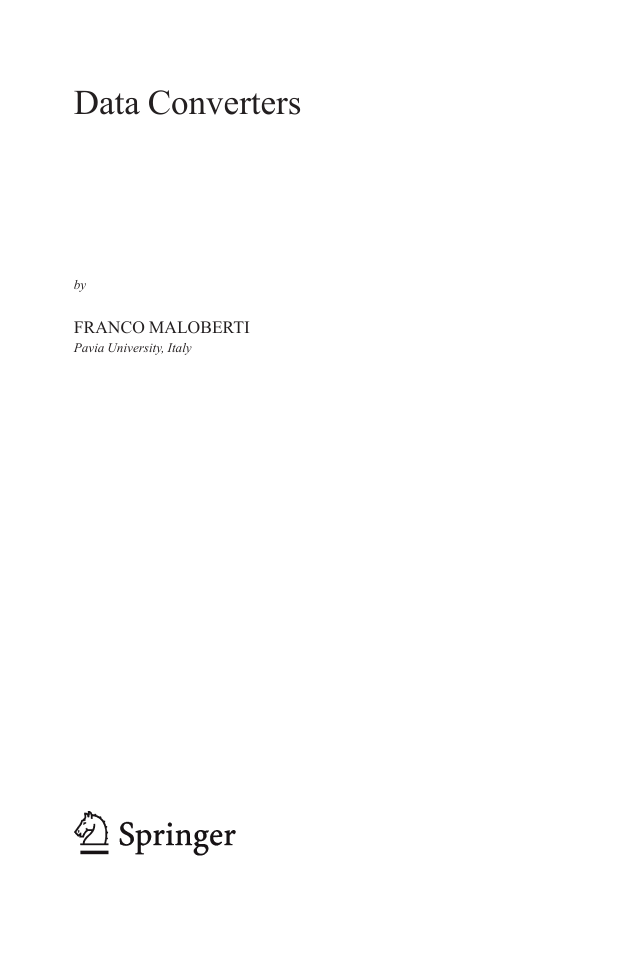
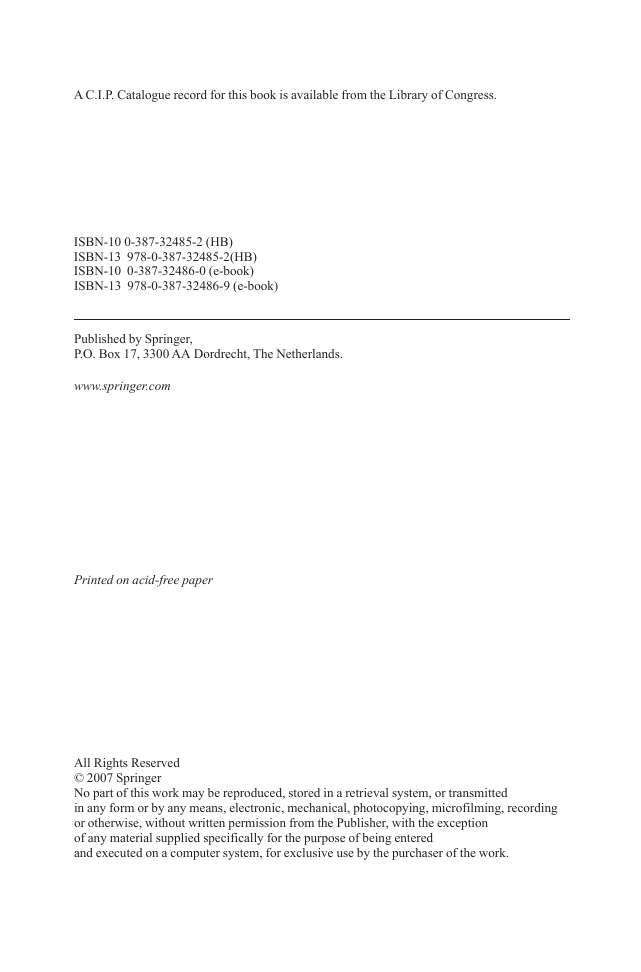
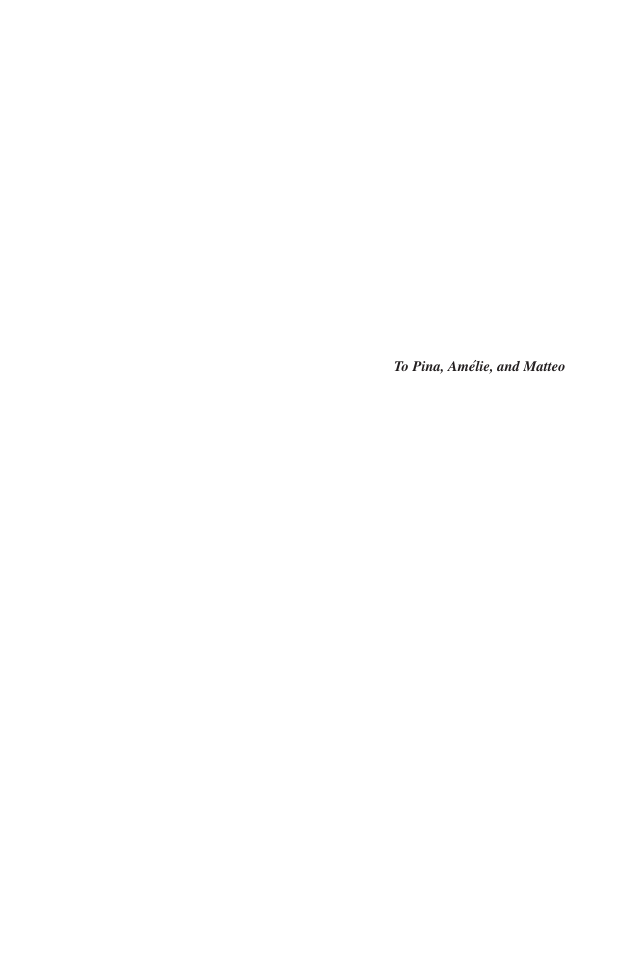
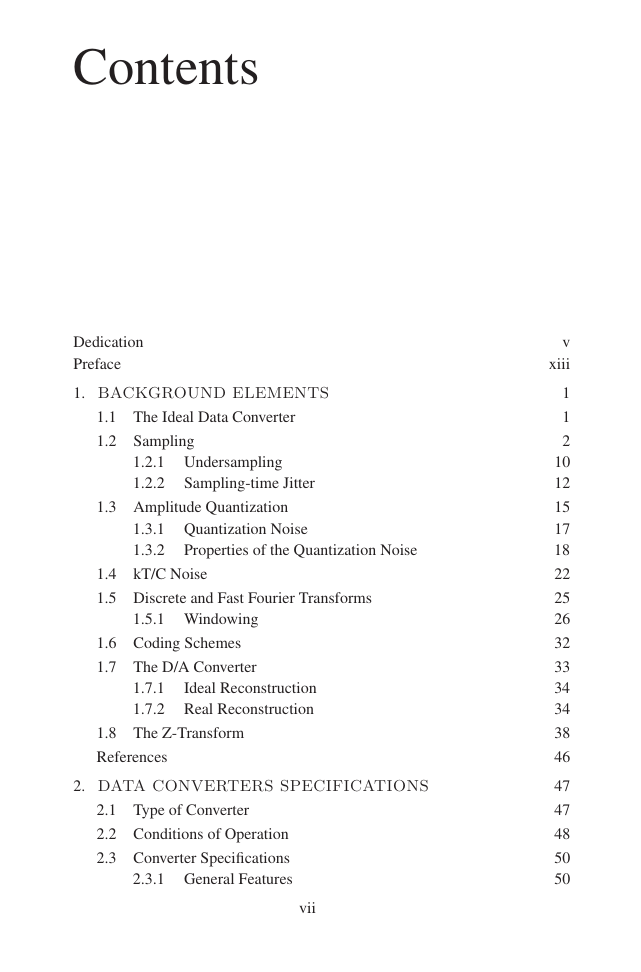
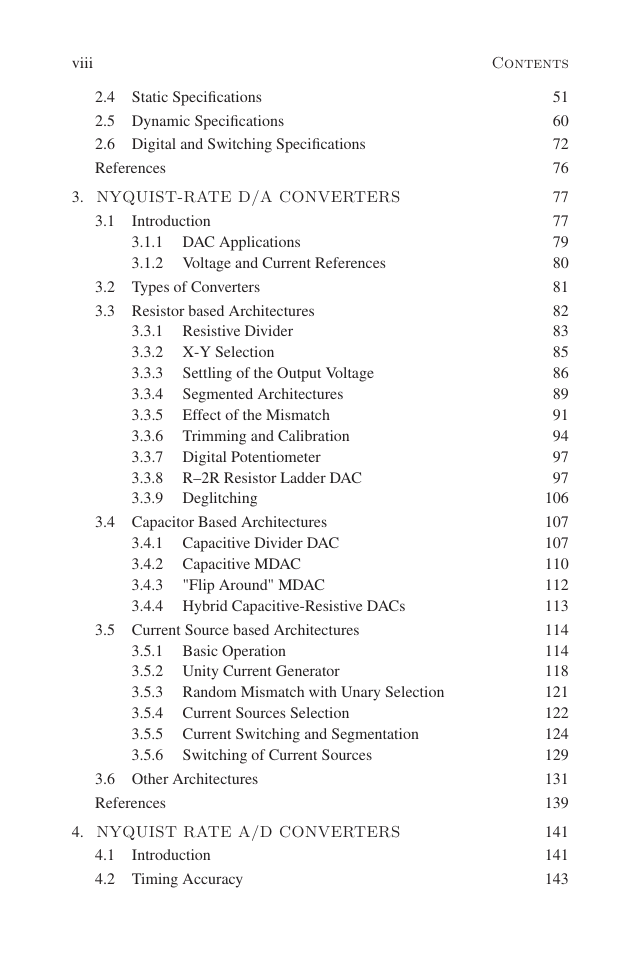
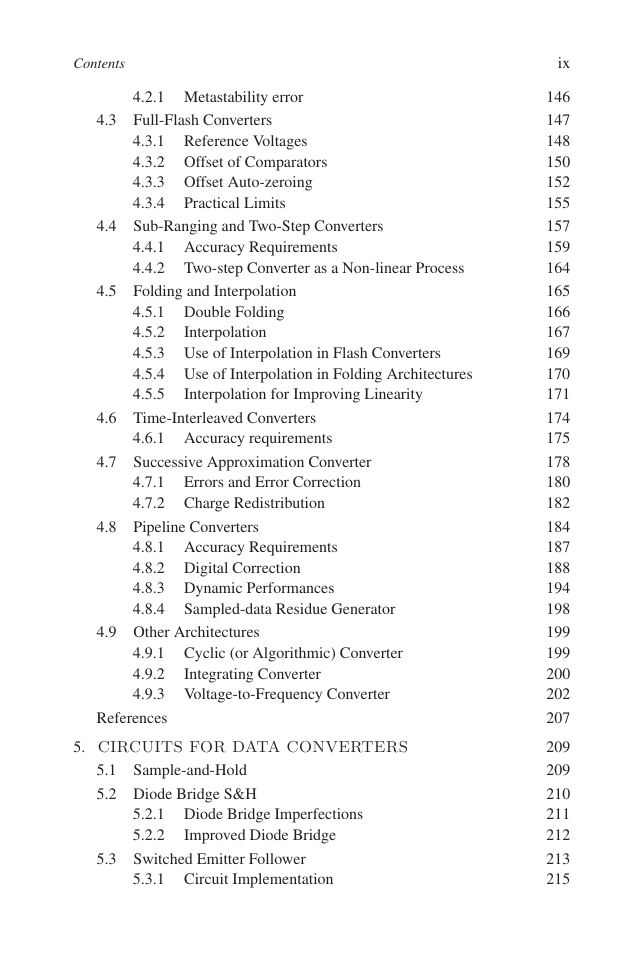








 2023年江西萍乡中考道德与法治真题及答案.doc
2023年江西萍乡中考道德与法治真题及答案.doc 2012年重庆南川中考生物真题及答案.doc
2012年重庆南川中考生物真题及答案.doc 2013年江西师范大学地理学综合及文艺理论基础考研真题.doc
2013年江西师范大学地理学综合及文艺理论基础考研真题.doc 2020年四川甘孜小升初语文真题及答案I卷.doc
2020年四川甘孜小升初语文真题及答案I卷.doc 2020年注册岩土工程师专业基础考试真题及答案.doc
2020年注册岩土工程师专业基础考试真题及答案.doc 2023-2024学年福建省厦门市九年级上学期数学月考试题及答案.doc
2023-2024学年福建省厦门市九年级上学期数学月考试题及答案.doc 2021-2022学年辽宁省沈阳市大东区九年级上学期语文期末试题及答案.doc
2021-2022学年辽宁省沈阳市大东区九年级上学期语文期末试题及答案.doc 2022-2023学年北京东城区初三第一学期物理期末试卷及答案.doc
2022-2023学年北京东城区初三第一学期物理期末试卷及答案.doc 2018上半年江西教师资格初中地理学科知识与教学能力真题及答案.doc
2018上半年江西教师资格初中地理学科知识与教学能力真题及答案.doc 2012年河北国家公务员申论考试真题及答案-省级.doc
2012年河北国家公务员申论考试真题及答案-省级.doc 2020-2021学年江苏省扬州市江都区邵樊片九年级上学期数学第一次质量检测试题及答案.doc
2020-2021学年江苏省扬州市江都区邵樊片九年级上学期数学第一次质量检测试题及答案.doc 2022下半年黑龙江教师资格证中学综合素质真题及答案.doc
2022下半年黑龙江教师资格证中学综合素质真题及答案.doc